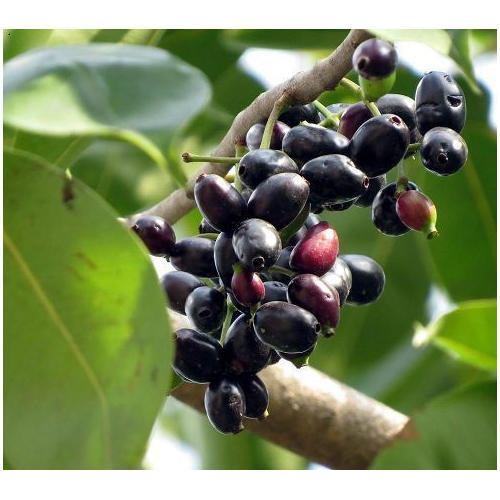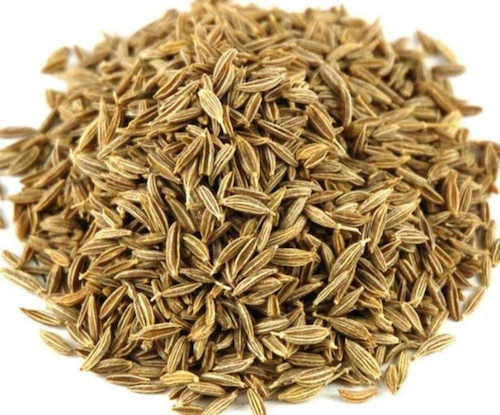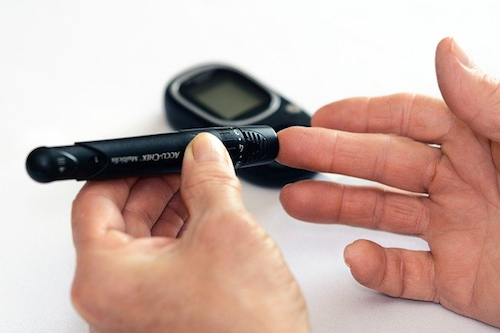Gudmar with the botanical name Gymnema Sylvestre, which is also called Madhunashini in Sanskrit has innumerable health benefits. It helps to lower blood sugar in diabetes and blood cholesterol.
Related article Natural Ayurvedic Remedies for Diabetes
This herb is widely found in dry deciduous forests of both central and southern India and as well as Sri Lanka. It usually grows as a woody climber and has its roots at the nodes. Both leaves and roots are medicinal, and it has significant effects on sugar; hence, it is popularly referred to as “insulin plant.”
Gymnema sylvestre or meshashringi is an herb of tropical forests of southern and central India and Sri Lanka. It is also known as Gymnema, Cowplant, Australian Cowplant, and Periploca of the woods.
When dropped on the tongue, Gymnema Fluid Extract blocks the receptors for the sweet taste for several hours – sweetness can hardly be tasted. The taste of fatty food changes too. The effect is strong and instantaneous. These are similar cell receptors in the intestines that normally allow sugar to be absorbed into the bloodstream. Hence this plant is known as “madhu nashini” , which means the one which destroys the sweet taste of the tongue and the sweetness of blood.
According to Alternative practitioner and herbalist Max Hill – “Gymnema sylvestre, a vine-like plant, has been used for centuries in India and Pakistan and is now becoming better known and popular in other countries. Scores of studies have been carried out on Gymnema Sylvestre which highlight its ability to help the body maintain blood sugar balance. One of its common names is ‘Gurmar’ which translates as ‘sugar destroyer.”
Gurmar is equipped with many bioactive nutrients which are essential in treating several health conditions.
Medicinal Uses and health benefits of Madhunashini or Meshashringi are explained in Ayurveda as follows.
Balances Vata dosha and Kapha Dosha
Leaves of this plant balance Vata dosha and Kapha dosha, has hot potency (ushna veerya), and can easily dry up the tissues (rooksha). It is very bitter to taste (tikta rasa ). When Madhunashini is consumed, it acts on the taste buds and alters their function; hence, you may not quickly feel the sweet taste for some time. The leaves of the herb madhunashini, when consumed act on taste buds and temporarily arrests their function. You will not be able to feel the taste of sweets for a few hours.
Helps in weight management
Since it balances Vata, Kapha and reduces meda dhatu (body fat), it is recommended for persons who are obese. It is the best ayurvedic natural herb for weight loss and is used to address obesity.
People who use Gymnema include those who are trying to lose weight as well as those keen to keep their blood sugar levels in balance. The key factors in balancing body weight are usually diet and exercise: Gymnema can be extra help. Some people take a few drops of Gymnema on the tongue just before a meal, which reduces the desire for sweet and fatty foods. Dropping this on the tongue also makes it nearly impossible to taste sweetness for up to 3 hours or even more.
Helps in the management of blood sugar levels in diabetes
Gudmar plant also known as madhunashini in Ayurveda (gymnema sylvestre) is highly praised for its anti-diabetic properties, its uses in PCOS or PCOD
Texts of Ayurveda recommend this herb for madhu meha or diabetes. Various researches have also proved its anti-diabetic properties.
Be aware that Gymnema Sylvestre might add to the effect of herbs that help balance blood sugar, including aloe vera, devil’s claw, eleutherocccus senticosus (siberian ginseng), fenugreek, ginger (in high amounts), jambul (jamboo), Panax ginseng, psyllium husks, stevia, and turmeric. Be cautious if using Gymnema Sylvestre alongside drugs that reduce blood sugar, including insulin; talk to your doctor before doing so.
Very effective in PCOS or PCOD
The weight loss and anti-diabetic properties of this plant help in controlling PCOS or PCOD.
The following properties compel ayurvedic physicians to use gudmar in PCOS
- The property of lowering blood sugar level
- Improving the sensitivity of cells to insulin
- Helping in weight loss.
- Stimulating the inner mucosal membranes of the uterus.
Helps in Digestion
Gudmar or Madhunashini is hot in potency. Its fresh juice stimulates the liver and improves digestion and appetite. This herb also acts as a laxative, hence helping with constipation.
Reduces effects of poison
It is used as an antidote for snake and scorpion bites.
Heals skin lesions
It accelerates wound healing and is also used in keloids and papules. It reduces inflammation of the affected part. It is also useful in psoriasis
Indian Local Names
Gudmar plant can be found in nurseries and tablets as pharmaceutical industries are now making use of this plant to manufacture different medications and supplements. In various Indian languages, this herb is called by different names as follows:
-
Hindi – Gurmar
-
Bengali – Meshashrunga
-
Konkani – Kawli
-
Gujarati – Gudmar, Madhunashini
-
Kannada – Madhunashini
-
Tamil – Sirukurinjan, Kokilam
-
Marathi – Bedakicha Pala , Gudmar
-
Malayalam – Chakkarakolli
-
Urdu – Gurmar
-
Telagu – Podapatri
-
Sanskrit – Madhunaashini, Meshasringa
-
Oriya – Lakshmi, Mendhasingia, Nagapushpi
Summary of benefits of Gurmar
- Gudmar controls high cholesterol levels and regulates triglyceride levels.
- It boosts the level of good lipid in the blood.
- It helps in lowering blood sugar levels.
- This herb is also used to prevent helminthiasis.
- It is employed in the treatment of wounds and snake bites.
- The leaf juice of Gudmar is used in order to avoid constipation, and for jaundice treatment, eye problems, fever, glycosuria, cough, dysuria, and as well as regulate body weight.
- The herb is utilized in the treatment of anemia and hyperglycemia.
- Gudmar extract is an excellent liver tonic.
- It also boosts immunity and prevents the formation of dental plaque.
- In Ayurveda, Madhunashini is used as a stimulant, emetic, laxative, and expectorant.
- Women find this herb beneficial, as it can be used to activate the uterus.
- It refreshes the activities of cardiac and enhances blood circulation.
- Gudmar is used as an appetizer, improves digestion, and also helps to kill worms.
According to Dr. Mark Jhonson
Gymnema Sylvestre has been used as a treatment for diabetes for at least two thousand years. Its name is derived from the Hindi name Gurmar which translates to “sugar destroyer”. It dates back to a time when the diagnosis of diabetes was literally made by sweet-tasting urine, so-called “honey urine”.
Historically, Gymnema has been used in the treatment of various ailments and conditions from stomach problems and constipation, to snake bites, and urinary disturbances. Probably the most exciting use of this herb, however, is for use in blood sugar balancing and glucose metabolism. Not surprising, is that the major portion of the research has been directed to blood sugar control, and use with diabetes.
Today, several studies have verified the beneficial effects of Gymnema Sylvestre in helping to control blood sugar levels and thereby improve diabetic control. An additional benefit seems to be the ability of this substance to control sugar cravings and also reduce sugar absorption in the intestine.
Another positive benefit of this natural substance is the gradual effect it has in improving blood-sugar metabolism and balance, rather than the not-so-subtle changes that occur with prescribed drugs. It also appears to be very safe in that the hypoglycemic effects do not lead to dangerously low blood sugar levels, but rather act within a normal range.
Fortunately, in this day and age, there are many companies that sell preparations containing this valuable herb for diabetics and pre-diabetics. Gymnema’s ability to stimulate existing cells in the pancreas to produce more insulin and function more effectively makes this natural for those felt to be at risk for developing diabetes.
Reference https://www.ncbi.nlm.nih.gov/pmc/articles/PMC3912882/
Consult Dr.Savitha Suri for ayurvedic remedies. Email drsavithasuri@gmail.com . WhatsApp + 91 6360108663
Author: Dr. Savitha Suri Consultant Ayurvedic Physician






